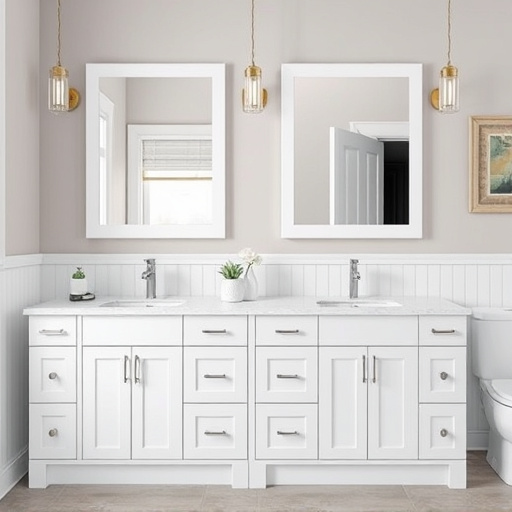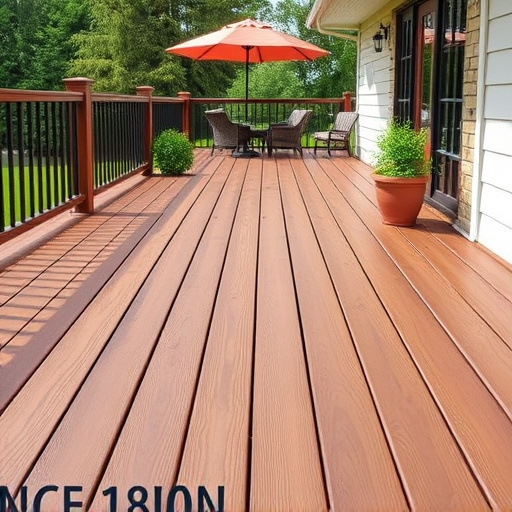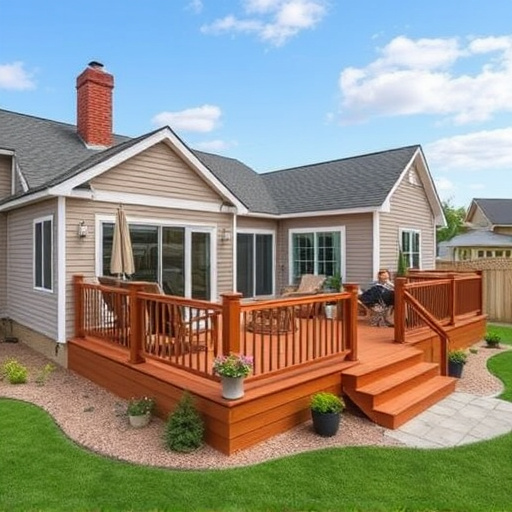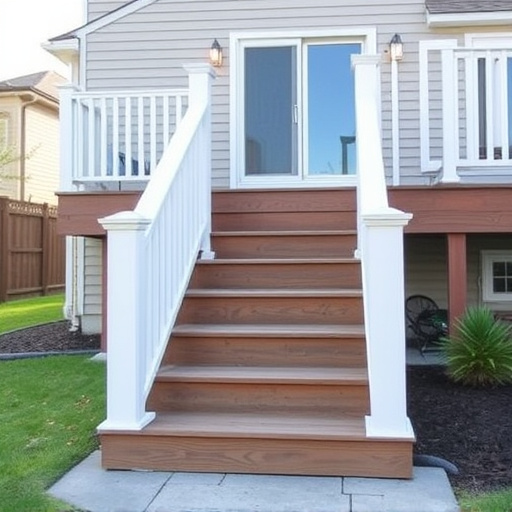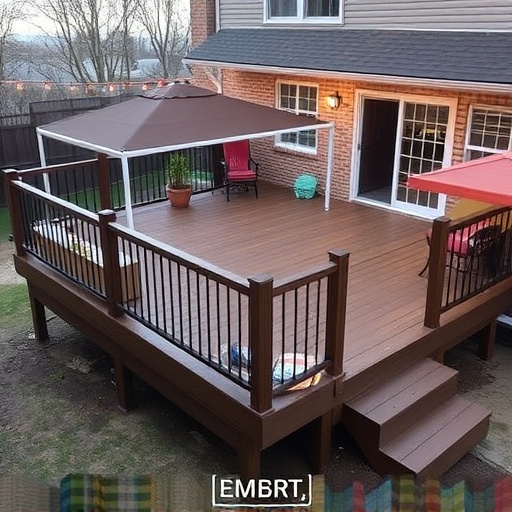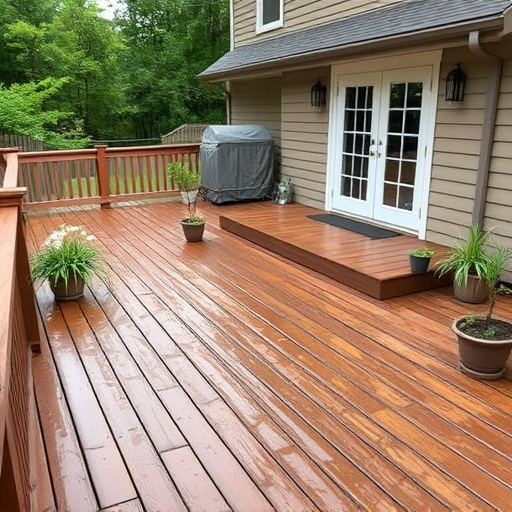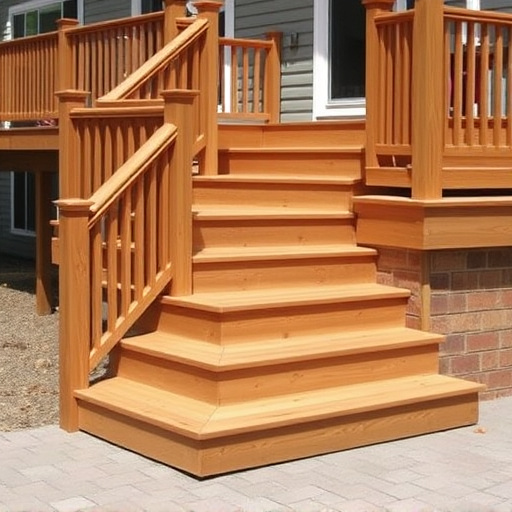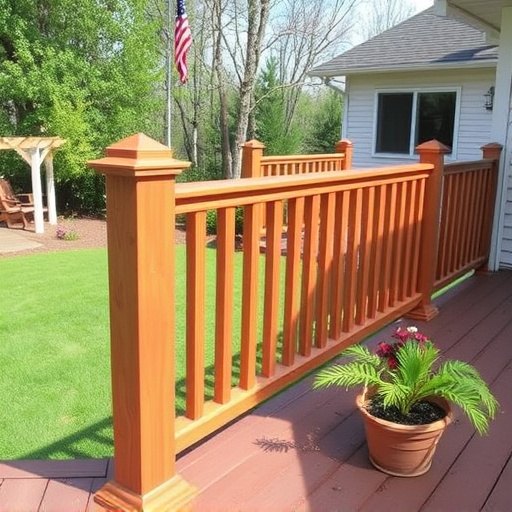Understanding your region's climate is key to successful deck design. Material choices should align with weather patterns, temperatures, rainfall, and wind conditions to ensure durability and low maintenance. For instance, in snowy regions, opt for decking materials that resist freezing temperatures, while composite decking offers a low-maintenance solution year-round. Integrating sustainable practices, such as eco-friendly siding and efficient gutters, enhances both the deck's aesthetics and functionality, safeguarding against weather damage and maximizing investment value.
Climate plays a pivotal role in shaping your final deck design choices. From material selection to structural integrity, weather patterns influence everything from durability to aesthetics. This article explores how understanding climate impacts deck design, offering insights on adapting material choices to specific conditions while integrating sustainability and functionality for a robust and beautiful outdoor space. Discover expert tips and strategies for creating a deck that thrives in your local environment.
- Understanding Climate's Role in Deck Design
- Material Choices: Adapting to Climatic Conditions
- Integrating Sustainability and Functionality
Understanding Climate's Role in Deck Design
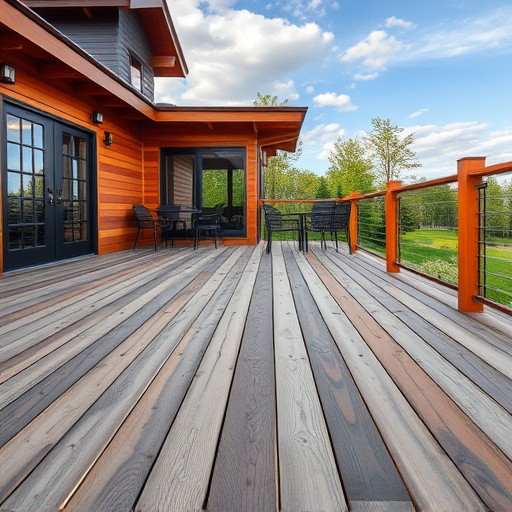
When considering deck design, understanding how climate influences your choices is key. Each region’s distinct weather patterns, temperature fluctuations, precipitation levels, and wind conditions present both challenges and opportunities for creating functional and aesthetically pleasing outdoor spaces. For instance, regions with harsh winters might require sturdier decking materials that can withstand snow and ice, while areas prone to heavy rainfall should account for water drainage systems to prevent pooling on the deck surface.
Additionally, climate considerations extend beyond structural design. Factors like sunlight exposure and wind direction impact where you place seating areas, shade structures, and even outdoor lighting. Incorporating weather-resistant finishes and low-maintenance materials can also be crucial for exterior home improvements, ensuring your deck stands the test of time—just as important as a roof replacement or roofing and siding installations in safeguarding your space from the elements.
Material Choices: Adapting to Climatic Conditions
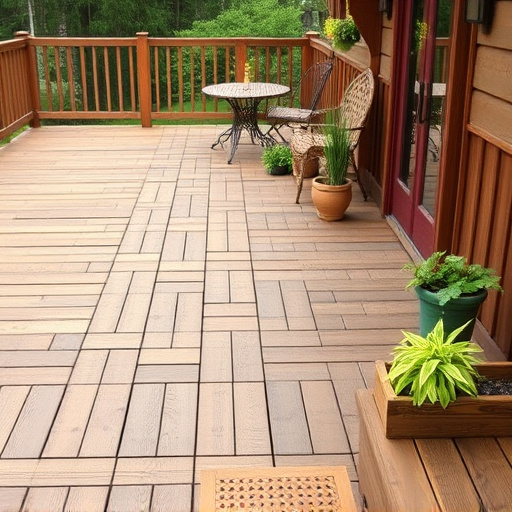
When designing your deck, one of the most significant considerations is adapting material choices to align with your region’s climatic conditions. Different climates demand specific materials that can withstand varying weather patterns, from harsh winters and heavy rainfall to scorching summers and high humidity levels. For instance, if you live in an area prone to snow and ice, opt for decking materials that offer superior insulation and resistance to freezing temperatures. Composite decking, known for its durability and low maintenance, is a popular choice for such regions as it mimics the look of wood without the need for regular staining or sealing.
Additionally, consider roofing solutions tailored to your deck’s needs. Proper roof repair and maintenance are essential to protect the deck below from water damage and structural deterioration. A skilled roof consulting service can recommend materials suitable for overhanging areas that will shield the deck from direct sunlight, excessive rain, or snow accumulation. By carefully selecting materials that cater to your climate, you ensure a durable, low-maintenance deck design that will stand the test of time and various weather-related challenges.
Integrating Sustainability and Functionality
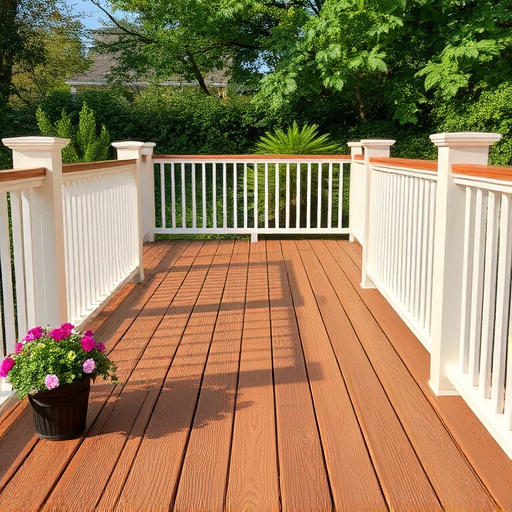
When designing your deck, integrating sustainability and functionality is essential for a modern and responsible space. Climate considerations play a significant role in material choices; opting for eco-friendly siding and gutters can significantly impact your deck’s long-term performance and appeal. These components not only enhance the aesthetics but also provide protection against harsh weather conditions, ensuring your investment lasts.
Choosing durable materials that are designed to withstand local climate challenges is key. For instance, if you’re facing frequent heavy rainfall, consider water-resistant siding options that can prevent water damage. Similarly, efficient gutters and downspouts will manage stormwater runoff, reducing the risk of erosion and flooding around your deck structure, which might require costly repairs or even a new roof replacement in severe cases.
When designing your ideal deck, considering climate is not just an option—it’s essential. By understanding how weather patterns impact your region, you can make informed decisions about materials and features that enhance both functionality and longevity. Incorporating sustainable practices further ensures your deck design not only stands the test of time but also contributes to a greener environment. With these key factors in mind, you’ll be well on your way to creating a stunning and resilient outdoor space that perfectly aligns with your climate and personal style.




